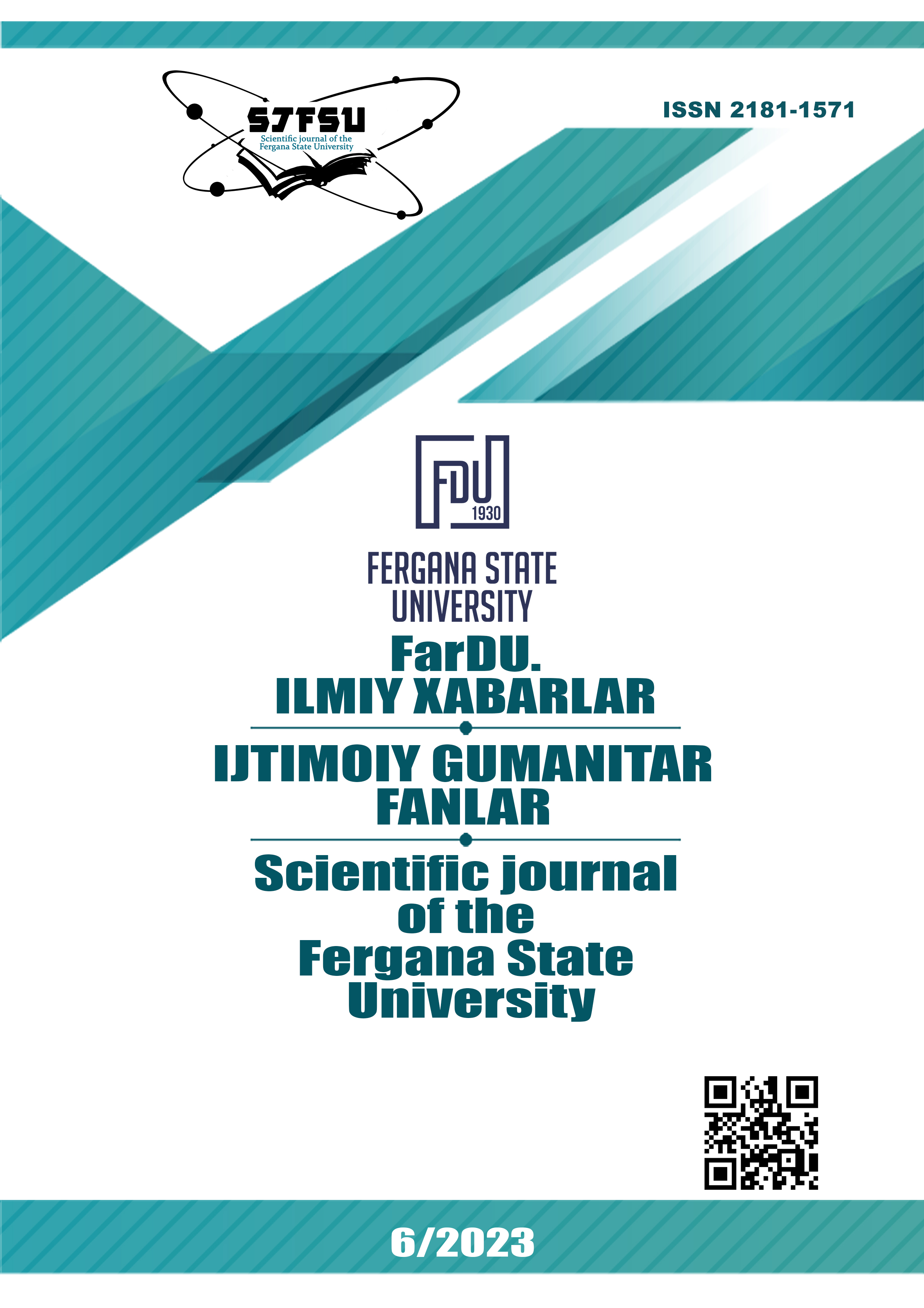THEORETICAL PREREQUISITES FOR THE STUDY OF ANTHROPONYMS IN THE TRANSLATION ASPECT
Main Article Content
Abstract
This article examines the current problem of translating anthroponyms. First of all, when translating oral or written texts that contain anthroponyms from one language into another, one must keep in mind that anthroponyms have a complex semantic structure and reflect the culture and national characteristics of the country, which must certainly be taken into account during translation. The article provides an overview of some translation methods proposed by various researchers in this field. The problem of translating anthroponyms in a literary text is quite complex in any text, namely in fiction. The main difficulty lies in choosing an adequate translation method; in a literary text, they become more complicated, since anthroponyms are significant elements of the text. The question of the correct transmission of words from one language to another is and has been relevant at all times, due to the discrepancy between the letter and sound aspects of the language. Based on the analyzes carried out, we came to the conclusion that to convey foreign anthroponyms in literary texts, translators resort to numerous techniques, the most popular of which are transliteration and transcription.
Article Details

This work is licensed under a Creative Commons Attribution-NonCommercial-NoDerivatives 4.0 International License.
References
Ермолович Д. И. Имена собственные на стыке языков и культур. М.: Р. Валент, 2001. –145 c.
Илюшкина М.Ю Теория перевода: основные понятия и проблемы/2015. – 47-51 c.
Коммисаров В. Н. Теория перевода (лингвистические аспекты). М.: Высшая школа, 1990. – 166 c.
Казакова Т. А. Практические основы перевода. СПб.: Союз, 2002. – 35 c.
Маджаева С.И., Байдашева Э.М. Термины с компонентом цветоообозначения в языке медицины//Научные ведомости Белгородского государственного университета. Серия: Гуманитарные науки. – 2019. Т. 38. № 2. – С. 219-226.
Кушнарева Т. В. К вопросу о переводе имен собственных в ономастике / Т. В. Кушнарева, В. И. Прибыткова, О. Ю. Полонская // Современное педагогическое образование. – 2021. – № 5. – С. 241.
12. Международная анатомическая терминология / под ред. М.Л.Колесникова. – М.: Медицина, 2003. – 424 с.
Ожегов, С. И. Словарь русского языка: Ок. 57 000 сов / С. И. Ожегов; под ред. докт. филол. наук, проф. Н. Ю. Шведовой. – 14-е изд., стереотип. – М.: Рус. яз., 1983. – 816 с.
Реформатский, А. А. Введение в языковедение / А. А. Реформатский; под ред. В. А. Виноградова. – М.: Аспект Пресс, 1996. –536 с.
Суперанская А. В. Общая теория имени собственного. М., 2012.-212 c.

